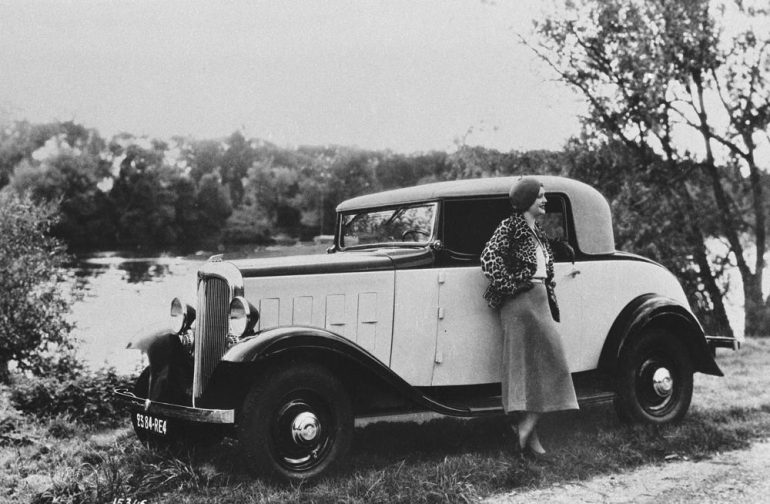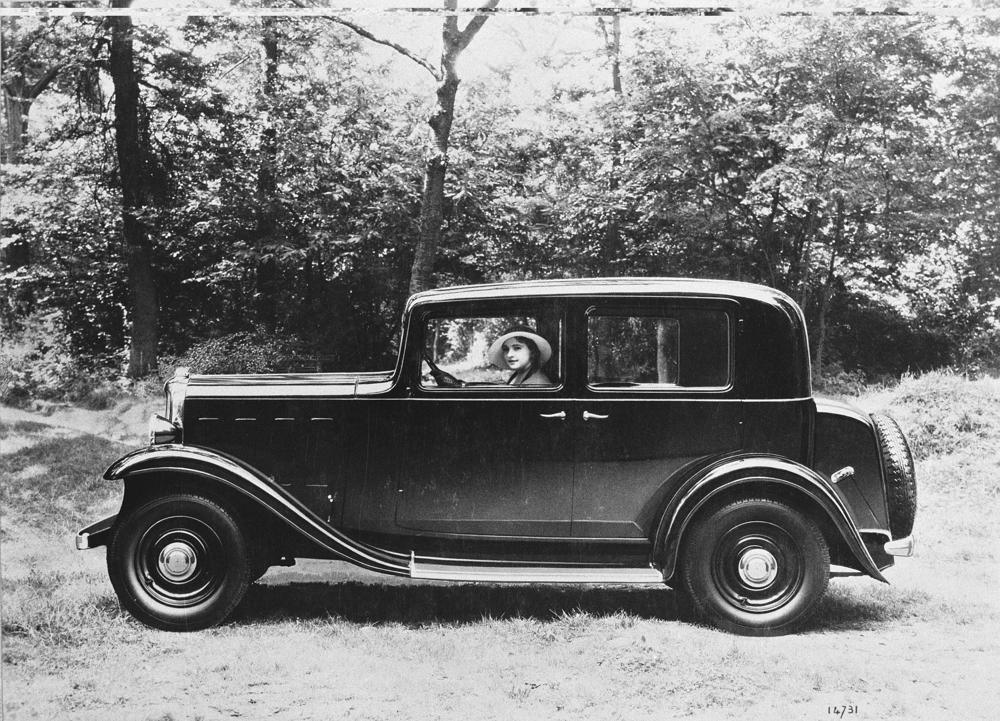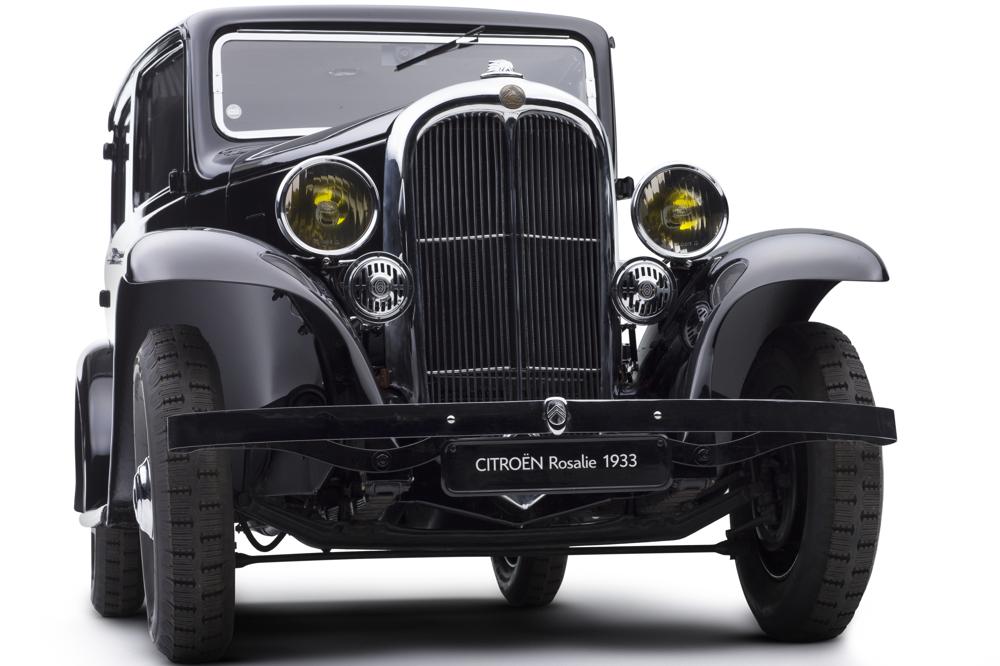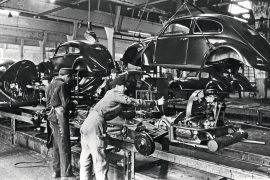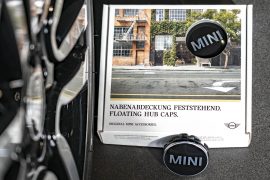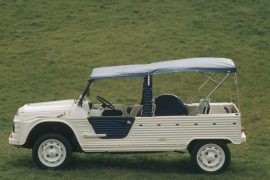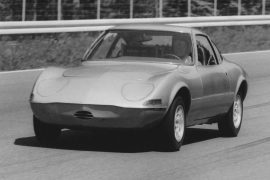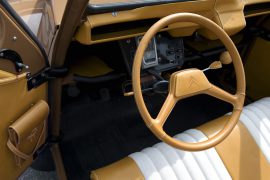MOBILITÉ/AUTOCULTURE: La „Rosalie“ de 1932
MOBILITY/AUTOCULTURE: The ‚Rosalie‘ of 1932
La „Rosalie“ a été présentée pour la première fois au Salon de l’automobile de Paris à l’automne 1932. Les trois modèles présentés, les Citroën 8CV, 10CV et 15CV, ont attiré l’attention par leur moteur innovant „flottant“. Une enseigne avec un cygne indiquait le montage du nouveau moteur produit à l’usine Citroën du Quai de Javel. Le dispositif de puissance flottante consistait à suspendre le support du moteur en deux points de l’axe longitudinal – permettant au moteur de vibrer librement. Des tampons en caoutchouc spécial ont été utilisés pour réduire les vibrations.
Les „Rosalies“ étaient disponibles avec des carrosseries et des intérieurs différents – en tant que voiture ouverte à deux places, en tant que limousine ou également en tant que fourgonnette avec une caisse ou une plate-forme. En 1934, les modèles de la série „Rosalie“ sont modernisés – ils reçoivent des carrosseries plus aérodynamiques et l’ajout de NH (nouvel habillage) à la désignation du modèle. En outre, ils ont célébré de nombreux succès dans les sports automobiles.
The „Rosalie“ was first presented at the Paris Motor Show in the autumn of 1932. The three models presented, the Citroën 8CV, 10CV and 15CV, attracted attention with their innovative „floating“ engine. A sign with a swan indicated the assembly of the new engine produced at the Citroën factory at Quai de Javel. The floating power device consisted of suspending the engine mount at two points on the longitudinal axis – allowing the engine to vibrate freely. Special rubber buffers were used to reduce vibrations.
The „Rosalies“ were available with different bodies and interiors – as a two-seater open car, as a limousine or also as a van with a body or platform. In 1934, the models of the „Rosalie“ series were modernised – they received more aerodynamic bodies and the addition of NH (new trim) to the model designation. In addition, they celebrated many successes in motor sports
Citroën 8CV – la „Petite Rosalie
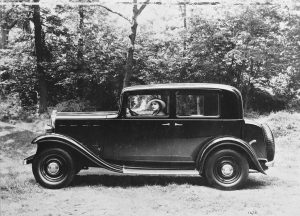
L’élégante Citroën 8CV, qui est entrée dans l’histoire de la société sous le nom de „Petite Rosalie“, était le plus petit véhicule de la série „Rosalie“. L’une de ses marques de fabrique était le corps en une seule pièce, encore plus rigide que les corps précédents entièrement en acier. Le moteur quatre cylindres d’une cylindrée de 1 452 cm3 développait 32 ch (24 kW) – ce qui permettait d’atteindre une vitesse maximale de 90 km/h. La 8CV NH Légère construite en 1934 avait 36 ch (26 kW). La puissance était transmise aux roues arrière par une boîte de vitesses à trois rapports.
La „Petite Rosalie“ se lance également dans une chasse aux records : du 15 mars au 27 juillet 1933, la Citroën 8CV parcourt 300 000 kilomètres en 134 jours à la vitesse moyenne de 93 km/h sur le circuit de Montlhéry sous la surveillance constante de l’Automobile Club de France. Avec ces chiffres, la Citroën 8CV a établi un nouveau record. Le fondateur de la société, André Citroën, promet un prix de trois millions de francs au constructeur qui dépassera ce kilométrage.
D’octobre 1932 à janvier 1935, un total de 38 835 unités de la „Petite Rosalie“ ont été construites.
The elegant Citroën 8CV, which went down in the company’s history as the „Petite Rosalie“, was the smallest vehicle in the „Rosalie“ series. One of its trademarks was the one-piece body, which was even more rigid than the previous all-steel bodies. The four-cylinder engine with a displacement of 1,452 cm3 developed 32 hp (24 kW) – which allowed a top speed of 90 km/h. The 8CV NH Légère built in 1934 had 36 hp (26 kW). The power was transmitted to the rear wheels by a three-speed gearbox.
The „Petite Rosalie“ also embarked on a record hunt: from 15 March to 27 July 1933, the Citroën 8CV covered 300,000 kilometres in 134 days at an average speed of 93 km/h on the Montlhéry circuit under the constant supervision of the Automobile Club de France. With these figures, the Citroën 8CV set a new record. The company’s founder, André Citroën, promised a prize of three million francs to the manufacturer who exceeded this mileage.
Between October 1932 and January 1935, a total of 38,835 units of the „Petite Rosalie“ were built.
Citroën 10CV
Avec une longueur de 4,57 mètres, la Citroën 10CV était 30 centimètres plus longue que la „Petite Rosalie“. Équipée d’un moteur à quatre cylindres d’une cylindrée de 1 767 cm3 et d’une puissance de 36 ch (26 kW), elle atteignait une vitesse maximale de 100 km/h (62 mph). Plusieurs variantes de carrosserie étaient disponibles pour la Citroën 10CV, ainsi que la version NH Légère de la 10CV „Rosalie“. Jusqu’en 1935, Citroën a produit un total de 49 249 unités de la Citroën 10CV.
Citroën 15CV
Dans la version 15CV, la „Rosalie“ disposait d’un moteur six cylindres à montage élastique d’une cylindrée de 2 650 cm3 et de 56 ch (41 kW). Le moteur étant plus gros, la partie avant a dû être allongée de 15 centimètres. Diverses carrosseries et équipements étaient également disponibles pour la Citroën 15CV. En outre, il existait une version Légère qui atteignait une vitesse de pointe de 120 km/h.
D’octobre 1932 à janvier 1935, 7 228 exemplaires de la Citroën 15CV ont été construits.
Le dee „Rosalie
A partir du 15 février 1933, 440 ouvriers produisent le dee „Rosalie“ à Cologne-Poll. Aucune pièce étrangère n’a été utilisée dans la construction. La „Rosalie“ était donc considérée comme dee make avec l’emblème associé de „dee work“. En deux ans, 1 789 véhicules ont été construits et vendus à Köln-Poll
Citroën 10CV
With a length of 4.57 metres, the Citroën 10CV was 30 centimetres longer than the „Petite Rosalie“. Equipped with a four-cylinder engine with a displacement of 1,767 cm3 and a power output of 36 hp (26 kW), it reached a top speed of 100 km/h (62 mph). Several body variants were available for the Citroën 10CV, as well as the NH Légère version of the 10CV „Rosalie“. Until 1935, Citroën produced a total of 49,249 units of the Citroën 10CV.
Citroën 15CV
In the 15CV version, the „Rosalie“ had a six-cylinder engine with a displacement of 2,650 cm3 and 56 hp (41 kW). Because of the larger engine, the front end had to be extended by 15 centimetres. Various body styles and equipment were also available for the Citroën 15CV. In addition, there was a light version that reached a top speed of 120 km/h.
From October 1932 to January 1935, 7,228 examples of the Citroën 15CV were built.
The „Rosalie
From 15 February 1933, 440 workers produced the dee „Rosalie“ in Cologne-Poll. No foreign parts were used in the construction. The „Rosalie“ was therefore considered a dee make with the associated „dee work“ emblem. In two years, 1,789 vehicles were built and sold in Köln-Poll
Marque : Citroën
magazine de design virtuel Michael Hiller
Brand: Citroën
Michael Hiller virtual design magazine

